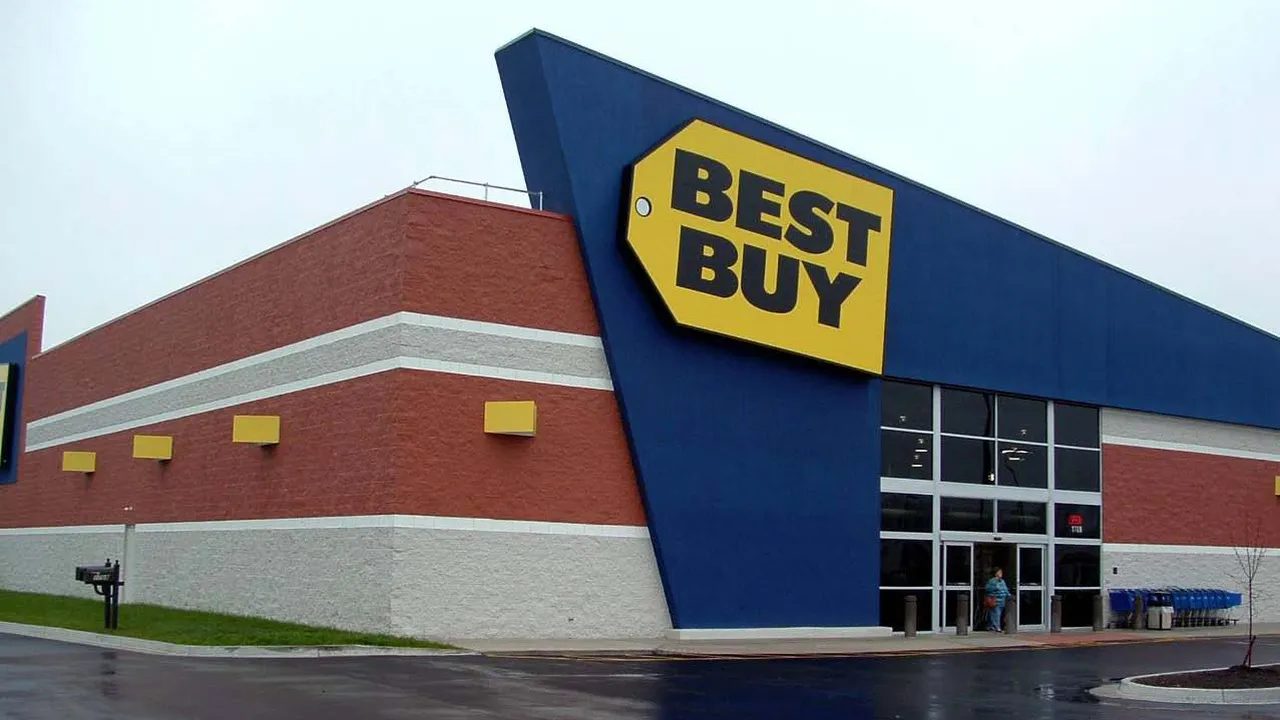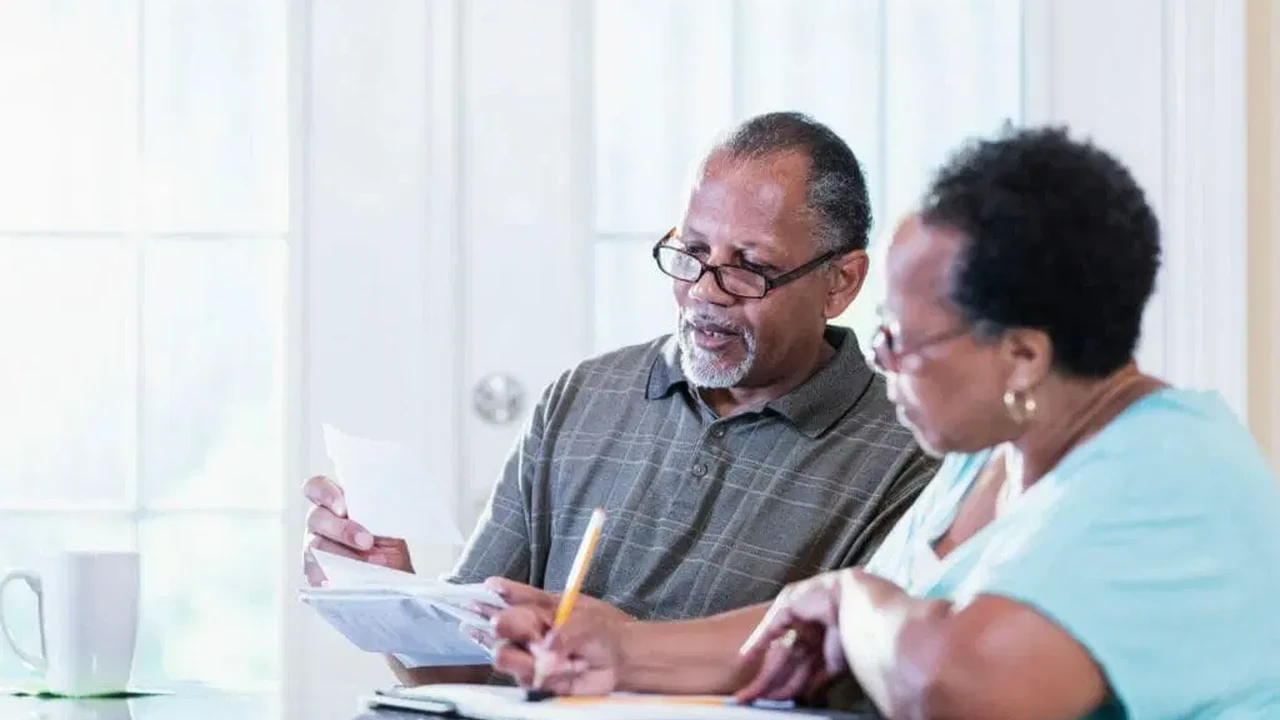Best GPS Trackers for Senior Safety
Explore GPS tracking devices that provide peace of mind for seniors and their caregivers.

Best GPS Trackers for Senior Safety
Understanding GPS Trackers for Seniors
As our loved ones age, maintaining their independence while ensuring their safety becomes a top priority. GPS trackers for seniors offer a fantastic solution, providing peace of mind for family members and a sense of security for the seniors themselves. These devices come in various forms, from wearable pendants and watches to discreet clip-on devices, each designed to help locate an individual if they wander, get lost, or need assistance. They leverage satellite technology to pinpoint a person's exact location, which can then be viewed by authorized caregivers via a smartphone app or web portal. This technology isn't just about tracking; it's about enabling seniors to live more freely, knowing that help is always within reach if needed. It's about striking that delicate balance between independence and safety, allowing seniors to continue their routines, explore their neighborhoods, and maintain their social connections without constant worry.
The market for senior GPS trackers has expanded significantly, offering a wide array of features beyond basic location tracking. Many devices now include SOS buttons for emergencies, two-way communication capabilities, geofencing alerts (notifying caregivers when a senior enters or leaves a predefined safe zone), fall detection, and even health monitoring features. The choice of device often depends on the senior's lifestyle, cognitive abilities, and specific needs. For instance, an active senior who enjoys walks might benefit from a discreet, long-battery-life device, while someone with cognitive decline might need a device with automatic fall detection and a simple SOS button. Understanding these nuances is crucial to selecting the best GPS tracker that truly enhances safety and quality of life.
Key Features to Look for in Senior GPS Trackers
When you're on the hunt for the perfect GPS tracker for an elderly loved one, it's not just about finding something that tracks location. There's a whole host of features that can make a real difference in terms of safety, usability, and peace of mind. Let's break down some of the most important ones you should consider.
Real-time Location Tracking and Accuracy
This is, of course, the core function. You want a device that provides accurate, real-time location updates. Look for devices that use a combination of GPS, Wi-Fi, and cellular triangulation for the best accuracy, especially indoors or in areas with poor satellite signal. Some devices update every few seconds, while others might update every few minutes. Consider how frequently you need updates based on the senior's activity level and potential for wandering.
SOS Button and Emergency Response
A dedicated SOS button is a non-negotiable feature. In an emergency, the senior should be able to press a single button to alert pre-selected contacts or a professional monitoring service. Check how the alerts are sent (SMS, app notification, call) and how quickly the response team or caregivers are notified. Some services even offer 24/7 professional monitoring, which can be a huge relief if family members aren't always available.
Two-Way Communication Capabilities
Many GPS trackers now double as mini-phones, allowing for two-way communication. This means caregivers can call the device, and the senior can answer, or vice versa. This is incredibly useful for checking in, providing reassurance, or getting more information during an emergency. Look for clear audio quality and easy-to-use controls for the senior.
Geofencing and Safe Zones
Geofencing allows you to set up virtual boundaries on a map. If the senior enters or exits these predefined 'safe zones' (like their home, a park, or a doctor's office), caregivers receive an instant alert. This feature is invaluable for individuals with cognitive decline or those prone to wandering, providing an early warning system and allowing for quick intervention.
Battery Life and Charging Convenience
A long battery life is crucial. You don't want to be constantly worrying about recharging the device. Look for trackers that offer at least 2-3 days of battery life on a single charge, and ideally, even longer. Also, consider the charging method. Is it a simple magnetic charger, a USB-C, or something more complex? Ease of charging is important for seniors who might have dexterity issues.
Durability and Water Resistance
Seniors can be active, and accidents happen. A durable device that can withstand minor drops and is at least splash-proof (IPX4 or higher) is a good idea. Some devices are fully waterproof, which is excellent for those who might wear it in the shower or during light rain.
Ease of Use for Seniors and Caregivers
The device itself should be simple for the senior to operate, with large buttons (if applicable) and clear indicators. For caregivers, the accompanying app or web portal should be intuitive, easy to navigate, and provide all necessary information at a glance. Complex interfaces can lead to frustration and underutilization.
Fall Detection (Optional but Recommended)
While not all trackers have this, automatic fall detection is a highly valuable feature, especially for seniors at risk of falls. The device uses accelerometers to detect sudden impacts and automatically sends an alert if a fall is detected, even if the senior can't press the SOS button. This can be a lifesaver in situations where immediate help is needed.
Subscription Costs and Monitoring Services
Most GPS trackers require a monthly subscription for cellular connectivity and access to tracking features. Compare these costs carefully. Some services offer professional 24/7 monitoring, which adds to the cost but provides an extra layer of security. Understand what's included in the subscription and if there are any hidden fees.
Top GPS Tracker Products for Seniors
Let's dive into some of the best GPS trackers currently on the market, highlighting their unique features, ideal use cases, and approximate pricing. Remember, prices can vary based on retailers and ongoing promotions.
1. MobileHelp Solo
Description: MobileHelp Solo is a popular choice for its simplicity and comprehensive features. It's a small, lightweight, and water-resistant mobile device that seniors can carry with them wherever they go. It offers both GPS tracking and an SOS button that connects directly to a 24/7 emergency response center. It also boasts two-way communication, allowing the senior to speak directly with the dispatcher.
Key Features:
- 24/7 professional monitoring
- Two-way communication
- GPS location tracking
- Water-resistant design
- Long battery life (up to 24 hours on a single charge)
- Optional fall detection
Ideal Use Case: Perfect for active seniors who want protection both inside and outside the home. It's great for those who might go for walks, run errands, or travel, providing constant connectivity to emergency services.
Approximate Price: Device cost is often included with a monthly subscription, which typically ranges from $30-$45 per month, depending on the plan and whether fall detection is added.
2. AngelSense GPS Tracker
Description: AngelSense is specifically designed with advanced safety features, often favored for individuals with dementia, autism, or other cognitive challenges. It offers highly accurate, real-time tracking, proactive alerts, and a unique 'listen-in' feature for caregivers to hear the senior's surroundings in an emergency. It's a wearable device, often worn on clothing or a belt, and is designed to be difficult for the wearer to remove.
Key Features:
- Highly accurate real-time GPS tracking (every 10 seconds)
- Proactive alerts for unexpected locations or delays
- Geofencing with intelligent learning (learns daily routines)
- Two-way voice with auto-answer for caregivers
- Listen-in feature for emergencies
- Non-removable design for enhanced safety
- Long battery life (up to 24 hours with active tracking)
Ideal Use Case: Best suited for seniors with significant wandering tendencies or cognitive impairments where constant, precise monitoring and proactive alerts are critical. The non-removable design adds an extra layer of security.
Approximate Price: Device cost around $99-$149, with monthly subscriptions ranging from $30-$50, depending on the plan and features.
3. Life Alert (Mobile Device)
Description: While Life Alert is famous for its 'I've fallen and I can't get up!' slogan, they also offer mobile GPS devices. Their mobile unit is designed for simplicity and direct connection to their 24/7 emergency dispatch center. It's a straightforward device with a large SOS button, focusing purely on emergency response and location.
Key Features:
- Direct connection to Life Alert's 24/7 emergency dispatch
- GPS location tracking
- Two-way communication with dispatchers
- Water-resistant
- Long battery life (often several days)
Ideal Use Case: For seniors who prioritize direct, reliable emergency response from a well-established service. It's less about detailed tracking and more about immediate help when needed, making it suitable for those who might not need constant monitoring but want a safety net.
Approximate Price: Life Alert is known for its higher pricing and often requires a long-term contract. Monthly fees can range from $50-$70+, with potential installation or activation fees.
4. Medical Guardian Mini Guardian
Description: The Mini Guardian is one of the smallest and lightest mobile medical alert devices available, making it very discreet and comfortable to wear. It offers GPS tracking, an SOS button, and two-way communication, all backed by Medical Guardian's 24/7 monitoring service. It's also water-resistant.
Key Features:
- Compact and lightweight design
- 24/7 professional monitoring
- GPS location tracking
- Two-way communication
- Water-resistant
- Long battery life (up to 5 days)
- Optional fall detection
Ideal Use Case: Excellent for active seniors who want a discreet and comfortable device that offers reliable emergency support both at home and on the go. Its long battery life is a significant advantage.
Approximate Price: Device cost is often included with a monthly subscription, which typically ranges from $35-$50 per month, depending on the plan and whether fall detection is added.
5. Jiobit Smart Tag
Description: While not exclusively for seniors, the Jiobit Smart Tag is a tiny, durable, and highly accurate GPS tracker that can be clipped onto clothing, a bag, or worn as a pendant. It's known for its exceptional battery life and precise location tracking, using a combination of GPS, Wi-Fi, and Bluetooth. It integrates with a user-friendly app for caregivers.
Key Features:
- Extremely small and lightweight
- Real-time, highly accurate location tracking
- Geofencing and trusted places alerts
- Exceptional battery life (up to 7-10 days with typical use)
- Durable and water-resistant
- Caregiver app with location history
Ideal Use Case: Best for independent seniors who might occasionally wander or need to be located, but don't necessarily require 24/7 professional monitoring or two-way communication directly from the device. It's also great for tracking personal items or pets if the senior has them.
Approximate Price: Device cost around $129, with monthly subscriptions ranging from $8-$15, making it a more affordable option for basic tracking.
6. Apple Watch with Cellular (Series 4 and newer)
Description: For tech-savvy seniors who are comfortable with smartwatches, an Apple Watch with cellular connectivity can serve as an excellent GPS tracker and emergency device. It offers GPS, fall detection, an SOS feature, and the ability to make calls and send texts directly from the watch, even without an iPhone nearby. It also has comprehensive health monitoring features.
Key Features:
- Built-in GPS and cellular connectivity
- Automatic fall detection with emergency call initiation
- SOS button for emergency services
- Two-way communication (calls and texts)
- Heart rate monitoring, ECG, blood oxygen (depending on model)
- Activity tracking and reminders
- Water-resistant
Ideal Use Case: Perfect for seniors who are comfortable with technology and want a multi-functional device that combines safety features with health monitoring and communication. It's a more integrated solution for those who embrace smart devices.
Approximate Price: Apple Watch Series 9 (GPS + Cellular) starts around $499. Monthly cellular plan for the watch typically adds $10-$15 to your existing phone bill.
Comparing the Options: Which One is Right for Your Senior?
Choosing the 'best' GPS tracker isn't a one-size-fits-all situation. It really depends on the individual senior's needs, their comfort level with technology, and the specific concerns of their caregivers. Let's break down how these options stack up against each other.
For Seniors with Wandering Tendencies or Dementia
If wandering is a primary concern, especially for someone with dementia or cognitive decline, AngelSense stands out. Its highly accurate, real-time tracking, non-removable design, and proactive alerts are specifically tailored for this challenging scenario. The 'listen-in' feature can also be invaluable for understanding the senior's immediate environment during an emergency. While MobileHelp Solo and Medical Guardian Mini Guardian offer good tracking and SOS features, they might not provide the same level of proactive monitoring and tamper-proof design as AngelSense.
For Active and Independent Seniors
For seniors who are generally independent but want a safety net for emergencies, MobileHelp Solo and Medical Guardian Mini Guardian are excellent choices. They are discreet, easy to carry, and offer direct access to 24/7 professional monitoring. The Jiobit Smart Tag is also a strong contender if professional monitoring isn't a strict requirement, offering superb battery life and accurate tracking in a tiny package. For the tech-savvy, an Apple Watch with Cellular provides a comprehensive solution, blending safety with health and communication features seamlessly.
For Seniors Prioritizing Emergency Response
If the main goal is a reliable, immediate emergency response system, then services like Life Alert (their mobile unit) and the professional monitoring aspects of MobileHelp Solo and Medical Guardian Mini Guardian are top-tier. These services are built around getting help to the senior as quickly as possible, often with dedicated dispatch centers that understand the nuances of senior emergencies.
Budget-Friendly Options
When budget is a significant factor, the Jiobit Smart Tag offers a very compelling value proposition with its lower monthly subscription fee, especially if you don't need 24/7 professional monitoring. While the initial device cost might be higher than some 'free with subscription' models, the long-term savings can be substantial. Other options like MobileHelp Solo and Medical Guardian Mini Guardian offer competitive monthly rates for professional monitoring, often with no upfront device cost.
Ease of Use and Comfort
For seniors who are not tech-savvy, simplicity is key. Devices like MobileHelp Solo, Medical Guardian Mini Guardian, and Life Alert's mobile unit are designed with large, easy-to-press SOS buttons and straightforward operation. The Jiobit Smart Tag is also very simple as it's mostly 'set it and forget it' for the senior. The Apple Watch, while powerful, requires a higher level of tech comfort and regular charging, which might not suit all seniors.
Setting Up and Using Your Senior GPS Tracker
Once you've chosen the right GPS tracker, setting it up and integrating it into the senior's daily life is the next crucial step. It's not just about turning it on; it's about ensuring it's used effectively and comfortably.
Initial Setup and Activation
Most GPS trackers come with clear instructions for activation. This usually involves charging the device, downloading a companion app on your smartphone (as the caregiver), and creating an account. You'll typically need to enter the device's serial number and choose a subscription plan. During this process, you'll also set up emergency contacts – these are the people who will be notified if the SOS button is pressed or a geofence alert is triggered. Take your time with this step to ensure all settings are correct.
Creating Safe Zones and Geofences
This is where the magic of geofencing comes in. Using the app, you can draw virtual boundaries on a map around places the senior frequents: their home, a favorite park, a doctor's office, or even a specific neighborhood. When the senior enters or leaves these zones, you'll receive an instant notification. This is incredibly helpful for monitoring routines and getting early warnings if they deviate from expected patterns. Be thoughtful about the size and number of geofences to avoid excessive, unnecessary alerts.
Educating the Senior on Device Use
This is perhaps the most important step. Sit down with the senior and explain what the device is for and how it works. Emphasize that it's for their safety and independence, not to track their every move in a restrictive way. Show them how to use the SOS button, explain what happens when they press it, and practice with them. Make sure they understand how to charge it and where to keep it. For devices with two-way communication, practice making and receiving calls. Patience and clear communication are key here.
Regular Monitoring and Communication
As a caregiver, regularly check the app for location updates and review any alerts. However, avoid over-monitoring, which can feel intrusive. Use the data to understand patterns and identify potential issues, rather than constantly scrutinizing every movement. Maintain open communication with the senior about the device. Ask them if they have any questions or concerns. Reassure them that it's a tool to support their independence and safety.
Battery Management and Maintenance
Establish a routine for charging the device. For example, suggest charging it overnight, just like a phone. Remind the senior (or assist them) to charge it regularly. Check the battery level via the app periodically. Also, keep the device clean and ensure it's not exposed to extreme temperatures or conditions beyond its water resistance rating. Software updates might also be available occasionally, which can improve performance and add new features.
The Future of Senior Safety Technology
The landscape of senior safety technology is constantly evolving, driven by advancements in AI, miniaturization, and connectivity. We're moving beyond simple GPS tracking towards more integrated, proactive, and personalized solutions.
Integration with Smart Home Systems
Expect to see deeper integration between GPS trackers and smart home ecosystems. Imagine a scenario where a senior's tracker detects a fall, and simultaneously, the smart home system unlocks the front door for emergency responders, turns on lights, and sends alerts to family members. This seamless communication between devices will create a more robust safety net.
AI-Powered Predictive Analytics
Artificial intelligence will play a significant role in predictive analytics. Instead of just reacting to events, AI could analyze a senior's movement patterns, sleep habits, and location data to identify subtle changes that might indicate a decline in health or an increased risk of wandering. This could lead to proactive interventions before a crisis occurs.
Enhanced Biometric Monitoring
Future trackers might incorporate more advanced biometric sensors, offering continuous monitoring of vital signs like blood pressure, glucose levels, and even early detection of conditions like arrhythmias. This data could be shared securely with healthcare providers, enabling more personalized and timely medical care.
Robotics and Companion Devices
The line between GPS trackers and companion robots might blur. Imagine a small, mobile robot that not only tracks a senior's location but also provides medication reminders, engages in conversation, and can even summon help in an emergency. These devices could offer both safety and companionship, addressing social isolation.
Hyper-Personalized Alerts and Support
As technology becomes more sophisticated, alerts and support will become hyper-personalized. Instead of generic notifications, caregivers might receive context-rich alerts, such as 'Mom has left her usual walking path and is heading towards a busy street,' or 'Dad's heart rate has been elevated for the past hour.' This level of detail will enable more targeted and effective responses.
Ultimately, the goal of these advancements is to empower seniors to live longer, healthier, and more independent lives, while providing their families with unparalleled peace of mind. The future of senior safety technology is bright, promising a world where aging is embraced with dignity, security, and connectivity.
:max_bytes(150000):strip_icc()/277019-baked-pork-chops-with-cream-of-mushroom-soup-DDMFS-beauty-4x3-BG-7505-5762b731cf30447d9cbbbbbf387beafa.jpg)






